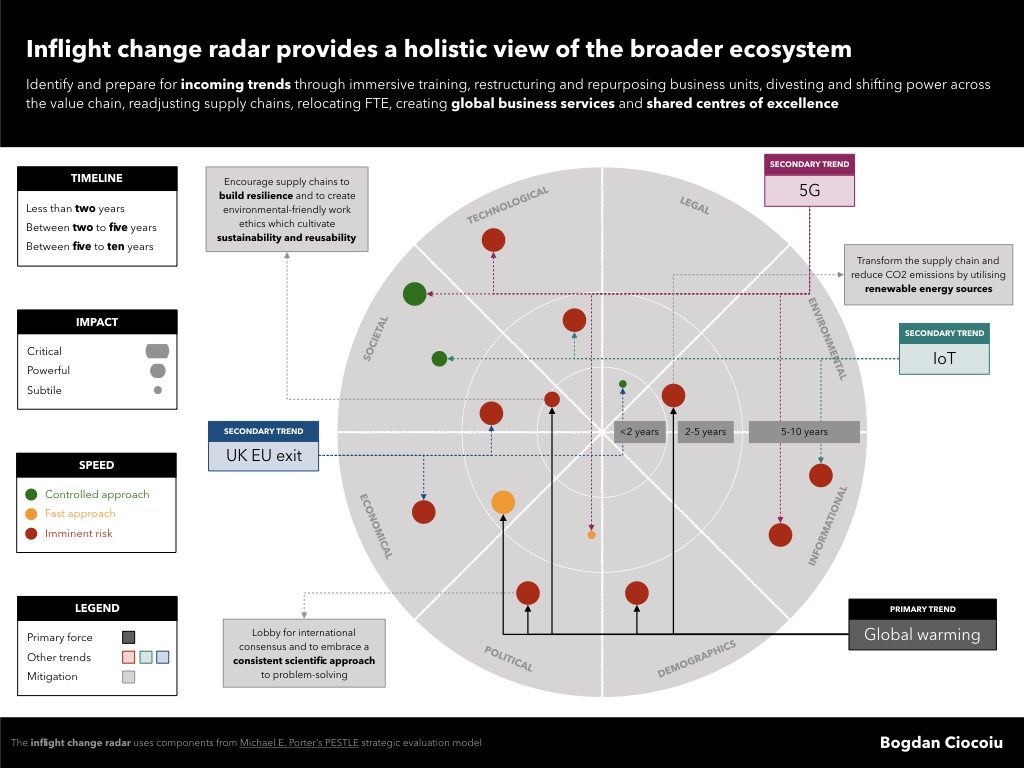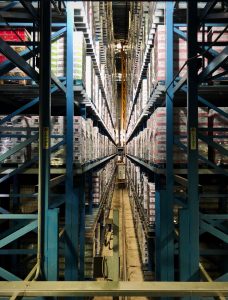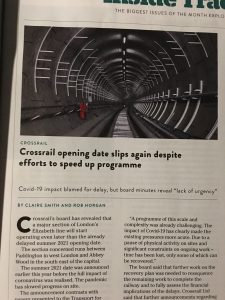Although technical or military settings use radars, a business change radar leverages the same principles by prioritising symbols on a circular visual representation, structured in multiple quadrants representing business units, organisation directorates or specific other functions.
Business analysts will develop a business change radar. They would have a thorough understanding of the organisational landscape, including suppliers, industry trends, and outside forces, which might affect the firm’s direction in which it seeks to grow. The analyst teams will examine megatrends, Gartner, news information, and industry articles. They will consider the prospects and the influence of emerging legislation and evaluate the impact of potential changes on the business’s performance.
Unless planned otherwise, change radars will leverage the PESTLE framework meaning, the landscape will have six sections, one for each change area. The PESTLE model is not exhaustive, and in light of the COVID-19 pandemic, organisations have started to embrace an extended PESTLE model whereby they consider mental and physical health and other layers of complexity that might affect how organisations grow.

Change radar developed using PESTLE
The standardised PESTLE model captures the following areas:
- Political forces
- Economic factors including EU exit relevant for the UK, international trade constraints,
- Societal sources of influences
- Technological drivers such as digitalisation
- Legal initiatives including lobbying
- Environmental regulations such as those concerning global warming
Each change factor is represented on the radar by a symbol such as a dot or an arrow. The symbol’s size, the direction of travel and colour coding will represent the force of impact, its trajectory and the speed with which it approaches the organisation. Alternatively, the length of the symbol will illustrate the trend velocity. (i.e. the longer the arrow, the faster the trend comes to the radar centre).

I advise that business analysts review change radars regularly subject to the industry they reflect and the ecosystem’s volatility level. Once completed, the C-suite will instruct business units while making strategic decisions about prioritising the organisation’s portfolio of projects or making other similar executive arrangements.






